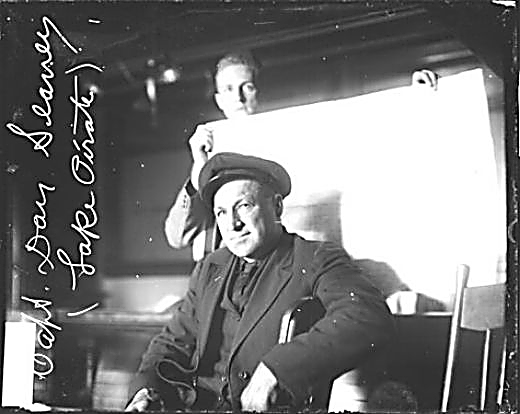
There’s an ancient Greek proverb that states, “Where there is sea, there are pirates.”
But not all pirates sailed the seven seas with a Jolly Roger flying overhead as they plundered precious metals and jewels, raided ports and unleashed their deadly cannons on unlucky ships that crossed their path.
Some roamed the Great Lakes, stealing timber, poaching venison and fish, and offering carnal activities with fallen women for the right price.
“There were more pirates, of course, down in places like the Caribbean. They were after gold,” said Lori Feret, a storyteller, photographer and active member of several historical societies.
“But here, it’s a totally different type of booty they were after. We have a different environment than they do in those coastal areas, so the piracy was different.”
An opportunity to learn more about these freshwater pirates is coming to the Oxford Public Library (530 Pontiac Rd.) on Wednesday, April 26 at 7 p.m.
Feret will present a program entitled, “Timber, Venison and Booze – Booty of the Great Lakes Pirates.”
“Most people have never heard of Great Lakes pirates,” explained the Madison Heights resident. “When you think of a pirate, you envision Long John Silver or Captain Jack Sparrow. You don’t envision a guy in a wool sweater with a wool cap up here in the Great Lakes.”
Back in the 1800s and early 1900s, “it was almost like the Wild West” on the Great Lakes, according to Feret, as ships were much faster than communications – which made it easier to evade the long arm of the law – and there was plenty of valuable cargo and rich natural resources to be procured by illegal means and sold for pure profit.
Arguably, the most famous – or infamous– Great Lakes pirate was Captain Daniel Seavey (1865-1949).
Nicknamed “Roaring Dan,” he made Lake Michigan and its ports his territory as he smuggled, conned, stole, hijacked, bootlegged, brawled, pimped and poached to earn his nefarious living. At one point, he actually used his 42-foot schooner, the Wanderer, as a floating brothel that served port towns in the Upper Peninsula.
“He’s a pretty interesting character,” Feret said.
Seavey is most famous for being arrested for piracy in June 1908. He’s reported to have stolen a small schooner named the Nellie Johnson in Grand Haven after getting its captain and crew ripsnorting drunk. He planned to sell its cargo, a load of cedar posts, in Chicago, but was unsuccessful. Following a chase that was sensationalized by newspapers, the federal revenue cutter Tuscarora captured the stolen vessel and arrested Seavey.
Seavey was arraigned for mutiny and sedition on the high seas, not piracy, but then set free after a grand jury failed to indict him, according to a 2012 article in “Michigan History” written by Dr. Richard J. Boyd, director of the Wisconsin Underwater Archeology Association.
Interestingly, newspapers across the country branded Seavey a pirate – a label that’s stuck to this day – but none of the official records mention the charge of piracy, according to Boyd. He speculated this was either a creation of the media, known for its yellow journalism at the time, or the charge was originally listed as piracy on the arrest warrant, but was later amended at the arraignment, a common practice.
Although Seavey publicly denied all accusations that he was the pirate of Lake Michigan, in private, he may have worn the label “as a personal badge of honor,” Boyd wrote.
Seavey was known to use the alias John Silver, according to Boyd, which is awful darn close to Long John Silver, the famous fictional pirate featured in the 1883 novel “Treasure Island.”
Feret invites people to attend her program and learn more about Seavey and the other pirates who used the Great Lakes to illegally line their pockets and sail their way into the pages of history.
“I find it fascinating,” she said. “I’ve been interested in maritime history, tall ships and lighthouses for a very long time.”
Attendees are more than welcome to wear an eyepatch or even don a peg leg if the spirit moves them. “I’ve had people come all dressed up in their pirate gear,” Feret said.

Leave a Reply